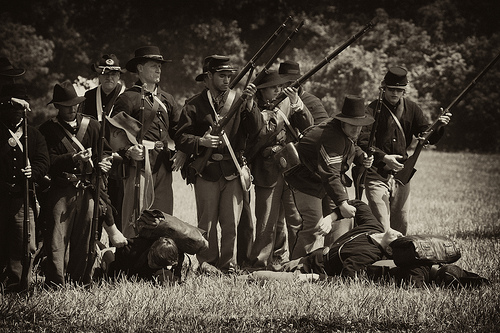Museums are increasingly turning toward alternate reality games (ARGs) as way to engage visitors and draw broader audiences to their collections. If you’re unfamiliar with the term ARG, Wikipedia’s entry provides an adequate working definition: “An alternate reality game (ARG) is an interactive narrative that uses the real world as a platform, often involving multiple media and game elements, to tell a story that may be affected by participants’ ideas or actions.”
Some of the earliest ARGs were viral marketing campaigns, such as I Love Bees, a game/promotion tied to the release of Halo 2 in 2004, or Year Zero, an ARG connected to Nine Inch Nails in 2007. The Smithsonian Institute ran one of the first museum-based ARGs in 2008, called Ghosts of a Chance, and followed up in 2010 with Pheon, a mission-based multimedia scavenger hunt played both online and in real life at the Smithsonian American Art Museum. The premise of Pheon is literally out of this world:
A variation on the classic game Capture the Flag, Pheon is a competition to obtain the game’s virtual talisman, the pheon, to restore balance to a virtual world called Terra Tectus. Players first determine their alliance to one of two groups: Staves or Knaves, and then complete various missions focused on the museum’s art collections, exhibitions, and programs to earn points and propel the game.
Setting Pheon within a fictional universe isn’t all that remarkable. After all, it is an alternate reality game. Many other ARGs likewise place an emphasis upon alternate: I Love Bees involved futuristic AIs, Year Zero takes place in the year 2022, Superstruct (created by I Love Bees community lead Jane McGonigal) begins in 2019, and imagines humans have only 23 years left until extinction.
But what happens if a game switches the emphasis from alternate to reality, as in a game soundly rooted in actual historical reality? I’m thinking of The Jewel of the Valleys, a Civil War-based alternate reality game that will launch in May. Hosted by the National Civil War Museum in Harrisburg, Pennsylvania, The Jewel of the Valleys seeks to link history and technology. As the ARG’s blog explains:
The game will kick off with a “QR code” and web address being sent to educators and students around the country. The website will detail a dark and mysterious puzzle to be solved through the use of Civil War era communication technologies and authentic Civil War documents in the Museum’s archives.
The game’s target looks to be middle school and high school students, and it sounds thoroughly engaging, what I’d call an authentic history game. Given the topic—the Civil War—I can’t help but make the connection to the way many other Americans have encountered the Civil War, through reenactment.

I wonder—and I have only tentative answers to these questions—what are the differences between an ARG truly set in an alternate reality and an ARG that takes place in our reality, but in the past of that reality? In the case of The Jewel of the Valleys, what are the differences between a historically-driven alternate reality game about the Civil War and a reenactment of a Civil War battle? Is a Civil War ARG simply the gamification of reenactment? Or is there more to an ARG on an epistemological, narrative, and performative level? And finally, what can our questions about ARGs tell us about the relationship between games and our cultural heritage?
[Six officers of the 17th New York Battery Photograph by David Knox, courtesy of Library of Congress, Prints & Photographs Division; Civil War Reenactors Photograph courtesy of mctheriot / Creative Commons Licensed]

I don’t think that ARG’s are the gamification (“just add points”) of reenactment. I think that a different experience arises depending on whether the persons involved see themselves as acting a role or playing a game. Obviously there is a relationship between performing and playing (as frequently we interchange these words) and the best examination of this relationship that I have read is Jane McGonigal’s thesis, “This Might Be a Game: Ubiquitous Play and Performance at the Turn of the Twenty-First Century.” http://janemcgonigal.com/learn-me/
Thanks so much for your kind mention of “The Jewel of the Valleys.”
And- thanks very much for the intelligent discussion of the place of historical ARGs. As my colleagues and I developed this game, we posed very similar questions- should the ARG play out the past as it happened? What place can fiction play in making the game more engaging, without misrepresenting actual events? At present, I’m sworn to secrecy about much of it, but expect a full debriefing to be published in early June.